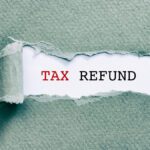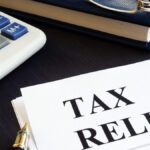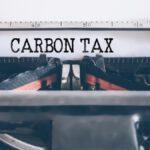Key Takeaways
- The CAI payment cheques are quarterly payments from the federal government to eligible residents of seven provinces that have a federal price on pollution.
- The payments are meant to offset the cost of the fuel charge and encourage climate action.
- The payment amounts vary by province and family size, and are higher for residents of small and rural communities.
- To receive the payments, you need to file your tax return and claim the Climate Action Incentive (CAI) on your return.
- You can also get a 10% supplement if you live in a small or rural community, or a refundable tax credit if you are a farmer or fisher.
Are you looking for some extra cash to help you with your expenses? Do you care about the environment and want to reduce your carbon footprint? If you answered yes to both questions, then you might be eligible for the Climate Action Incentive (CAI) payment cheques in 2024.
The CAI payment cheques are part of the federal government’s plan to fight climate change by putting a price on pollution. The government applies a fuel charge to fossil fuels in provinces that do not have their own pollution pricing systems that meet the federal standards. The fuel charge increases the cost of gas, diesel, propane, and other fuels, making them more expensive to use and encouraging people to switch to cleaner alternatives.
But don’t worry, Hustlers. The government does not keep any of the money from the fuel charge. Instead, it returns 90% of the revenue to the residents of the affected provinces through the CAI payment cheques. The other 10% goes to support small businesses, Indigenous groups, schools, hospitals, and other organizations that need to transition to a low-carbon economy.
The CAI payment cheques are designed to give you more money back than what you pay in fuel charge, especially if you take actions to reduce your emissions. For example, you can save money by driving less, taking public transit, buying a fuel-efficient or electric vehicle, installing a smart thermostat, or upgrading your insulation.
In this article, we will tell you everything you need to know about the CAI payment cheques in 2024, including:
- Who is eligible to receive them
- How much you can expect to receive
- When and how you will receive them
- How to claim them on your tax return
- How to get additional benefits if you are a rural resident, a farmer, or a fisher
Also Read: Carbon Tax Rebate 2023 – 2024: Key Takeaway Book
Who is eligible to receive the CAI payment cheques in 2024?
The CAI payment cheques are available to eligible residents of seven provinces that have a federal price on pollution in 2024. These provinces are:
- Alberta
- Manitoba
- Newfoundland and Labrador
- Nova Scotia
- Ontario
- Prince Edward Island
- Saskatchewan
To be eligible, you must meet the following criteria:
- You must be a resident of one of the above provinces on December 31, 2023
- You must be 19 years of age or older, or have a spouse or common-law partner, or be a parent who lives with your child
- You must file a 2023 tax return
You are not eligible if you are:
- A non-resident of Canada
- Incarcerated in a correctional institution for a term of at least 90 days
- Enrolled as a full-time student at a designated educational institution for at least eight months of the year, unless you have a spouse or common-law partner, or a child who lives with you
- Claimed as a dependant on someone else’s tax return
How much can you expect to receive?
The amount of the CAI payment cheques depends on your province of residence, your family size, and whether you live in a small or rural community. The table below shows the annual payment amounts for each province for the 2023-2024 payment period.
| Province | Single adult or first adult in a couple | Second adult in a couple or first child of a single parent | Each child under 19 (maximum of 4 children) | Single parent supplement |
| Alberta | $616 | $308 | $154 | $308 |
| Manitoba | $336 | $168 | $84 | $168 |
| Newfoundland and Labrador | $248 | $124 | $62 | $124 |
| Nova Scotia | $a248 | $124 | $62 | $124 |
| Ontario | $244 | $122 | $61 | $122 |
| Prince Edward Island | $172 | $86 | $43 | $86 |
| Saskatchewan | $448 | $224 | $112 | $224 |
The payment amounts are based on the projected fuel charge revenues for each province, and are subject to change in future years.
If you live in a small or rural community, you are eligible for a 10% supplement on top of the base payment amounts. A small or rural community is defined as a community that is outside a Census Metropolitan Area (CMA) or a Census Agglomeration (CA), as defined by Statistics Canada. You can find out if your community qualifies for the supplement by using the Small and Rural Community Finder tool on the Canada Revenue Agency (CRA) website.
The table below shows the annual payment amounts for small and rural residents for each province for the 2023-2024 payment period.
| Province | Single adult or first adult in a couple | Second adult in a couple or first child of a single parent | Each child under 19 (maximum of 4 children) | Single parent supplement |
| Alberta | $678 | $339 | $169 | $339 |
| Manitoba | $370 | $185 | $92 | $185 |
| Newfoundland and Labrador | $273 | $136 | $68 | $136 |
| Nova Scotia | $273 | $136 | $68 | $136 |
| Ontario | $268 | $134 | $67 | $134 |
| Prince Edward Island | $189 | $94 | $47 | $94 |
| Saskatchewan | $493 | $246 | $123 | $246 |
When and how will you receive the CAI payment cheques in 2024?
The CAI payment cheques are paid on a quarterly basis, starting in July 2022. The payment dates for 2024 are:
- January 15, 2024
- April 15, 2024
- July 15, 2024
- October 15, 2024
If the payment date falls on a weekend or a holiday, the payment will be issued on the next business day.
The payment method depends on how you receive your tax refunds and benefits from the CRA. If you have signed up for direct deposit, the payment will be deposited directly into your bank account. If you have not signed up for direct deposit, the payment will be mailed to you as a cheque.
To sign up for direct deposit, you can use one of the following options:
- Log in to My Account on the CRA website and select “Direct deposit”
- Use the MyBenefits CRA or MyCRA mobile apps and select “Direct deposit”
- Contact your financial institution and provide them with your social insurance number and your CRA account number
- Complete and mail the Canada direct deposit enrolment form to the CRA
How to claim the CAI payment cheques on your tax return
To receive the CAI payment cheques, you need to file your 2023 tax return and claim the Climate Action Incentive (CAI) on your return. You can do this online using [NETFILE] or [EFILE], or by mailing a paper return to the CRA.
The CAI is claimed on Schedule 14 of your tax return. You need to enter the following information on Schedule 14:
- Your province of residence on December 31, 2023
- The number of eligible members in your family
- Whether you live in a small or rural community
- The amount of the CAI that you are entitled to
You can use the [Climate Action Incentive Calculator] on the CRA website to estimate the amount of the CAI that you are entitled to.
The CAI is a refundable tax credit, which means that you will receive the full amount regardless of your income tax payable. However, the CAI may affect your eligibility for other benefits and credits, such as the GST/HST credit, the Canada workers benefit, and the Canada child benefit. The CRA will automatically adjust your benefits and credits based on your CAI claim.
How to get additional benefits if you are a rural resident, a farmer, or a fisher
If you are a rural resident, a farmer, or a fisher, you may be eligible for additional benefits related to the fuel charge.
If you are a rural resident, you may be eligible for the [Green Homes Grant], which is a program that provides up to $5,000 in grants to help you make energy-efficient improvements to your home, such as installing solar panels, heat pumps, or insulation. You can apply for the grant online through the [Green Homes Grant portal].
If you are a farmer, you may be eligible for the [Fuel Charge Exemption Certificate for Farmers], which allows you to purchase gasoline and light fuel oil (such as diesel) without paying the fuel charge, if you use the fuel for eligible farming activities.
To apply for the Fuel Charge Exemption Certificate for Farmers, you need to complete and submit the [Form L402] to the CRA. You also need to provide proof of your eligibility, such as a copy of your farming income tax return, a farming business registration number, or a statement from an accredited farming organization.
If you are a fisher, you may be eligible for the [Fuel Charge Refund for Fishers], which allows you to claim a refund of the fuel charge that you paid on gasoline and light fuel oil (such as diesel) that you used for eligible fishing activities.
To claim the Fuel Charge Refund for Fishers, you need to complete and submit the [Form GST494] to the CRA. You also need to provide proof of your eligibility, such as a copy of your fishing income tax return, a fishing business registration number, or a statement from an accredited fishing organization.
Conclusion
The CAI payment cheques are a way for the federal government to return the money from the fuel charge to the residents of the provinces that have a federal price on pollution. The payments are meant to offset the cost of the fuel charge and encourage climate action.
By claiming the CAI on your tax return, you can receive quarterly payments that vary by your province, your family size, and whether you live in a small or rural community. You can also get additional benefits if you are a rural resident, a farmer, or a fisher.
At HustleHub, we want to help you make the most of your money and your environment. That’s why we offer you the best tips and tools to save money, reduce your emissions, and live a greener lifestyle. Check out our blog for more articles on how to save money and the planet.
We hope you enjoyed this article and learned something new. If you have any questions or feedback, please leave a comment below. And don’t forget to share this article with your friends and family who might be interested in the CAI payment cheques.
Source: (1) Climate Action Incentive payment amounts for 2023-24. https://www.canada.ca/en/department-finance/news/2022/11/climate-action-incentive-payment-amounts-for-2023-24.html. (2) Climate Action Incentive Payment – Canada.ca. https://www.canada.ca/en/revenue-agency/services/forms-publications/publications/rc4215/climate-action-incentive-payment.html.









